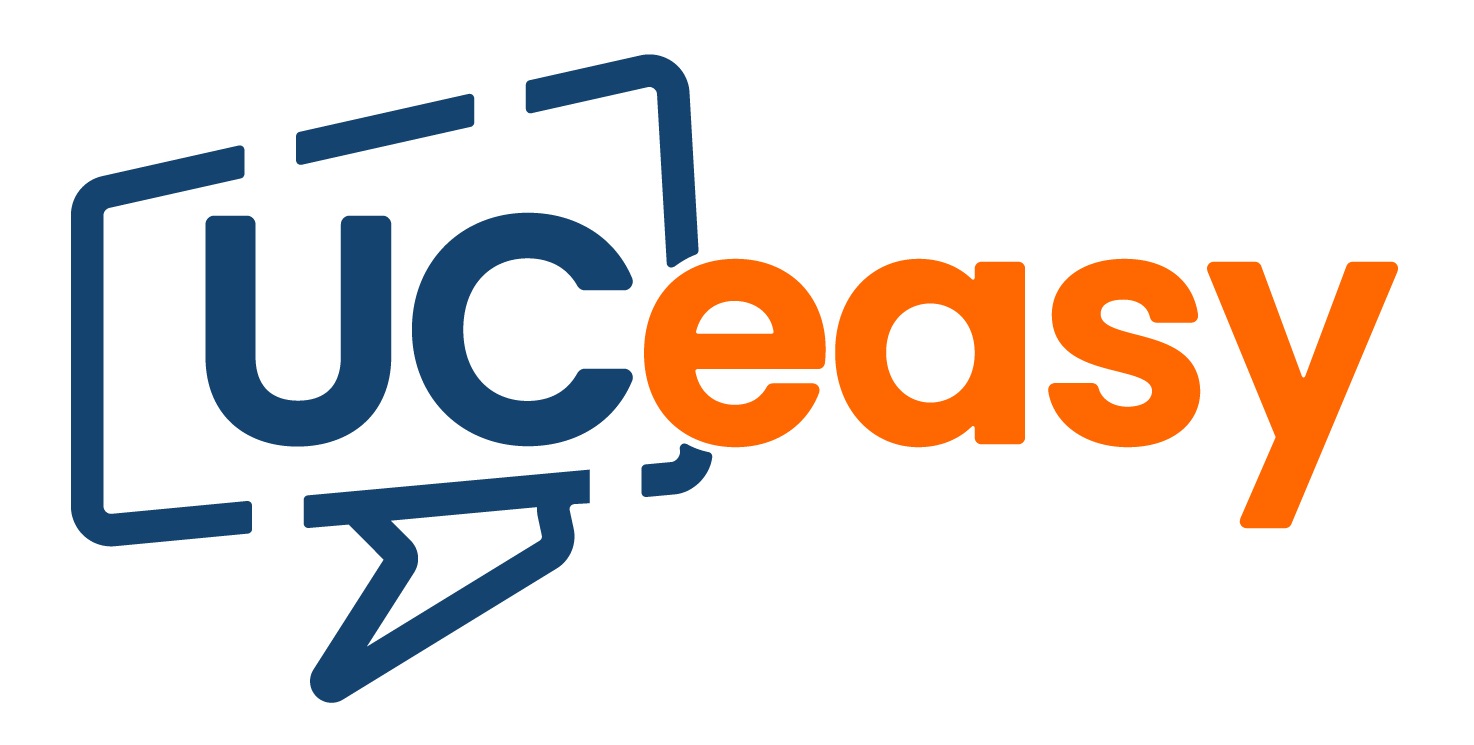Your Go-To Glossary for VoIP, Cloud PBX, and Internet Calling
If you’ve ever found yourself lost in a conversation about VoIP, cloud phone systems, or modern business telephony, you’re not alone. The world of internet-based communication is full of technical jargon, acronyms, and industry terms that can feel overwhelming at first. That’s why we’ve put together this complete VoIP and Cloud Telephony Glossary to understanding the essential concepts, from basic analog signals to advanced protocols like WebRTC. Whether you’re a business owner exploring hosted PBX solutions, a reseller looking to sharpen your knowledge, or simply curious about how internet calling works, this glossary will help you speak the language of modern communications with confidence.
Analog audio signals
Analog audio signals carry voice over phone lines by varying sound wave frequencies to match spoken pitch. The same modulation technique is also used in radio transmissions.
ATA (Analog Telephone Adapter)
An ATA is a device that lets standard telephones connect to the internet over broadband. It transforms analog voice into IP packets, generates dial tone, and handles call setup processes.
Audio encoding
The ITU has set standards for various audio codecs under H.323, which also work with SIP (since SIP supports any codec). Common examples:
-
G.711 – 3 kHz audio at 64 kbps using PCM, standard for legacy phone networks.
-
G.722 – Wideband 7 kHz audio at 48, 56, or 64 kbps. Variants include G.722.1 (24/32 kbps) and G.722.2 (~16 kbps).
-
G.723.1 – Low-bitrate speech compression at 5.3–6.3 kbps.
-
G.728 – 3.4 kHz audio at 16 kbps with ultra-small packets (0.625 ms) to reduce delay.
-
G.729 – 8 kbps with 15 ms packets. G.729 and G.729A differ only in processing algorithms.
-
Speex – Open-source, patent-free codec with variable bitrates (2.15–44.2 kbps).
-
GSM6.10 – Open-source at 13.3 kbps, though currently under patent dispute.
Audio Menu
A pre-recorded menu of spoken options used in automated attendants, IVR systems, or fax-on-demand. Callers select options using their voice or phone keypad.
Audio Response Unit (ARU)
A telephony system that stores and plays back audio messages. Basic ARUs deliver fixed recordings, while interactive ARUs adapt responses based on caller input.
Audio Teleconferencing
Early teleconferencing used PBX circuits, often with poor quality and limited capacity. Conference bridges later improved quality but needed operator support. Today’s PC-based tools allow self-service scheduling and management, while newer endpoint solutions can mix calls without central hardware.
Bandwidth
The capacity of a communication link, expressed in bits per second (bps) for digital or Hertz (Hz) for analog. It may also refer to the range of frequencies a signal occupies.
Call Duration
The total time a phone remains off-hook during a call, from answer to hang-up.
Circuit-Switched Networks
A traditional network model that dedicates a direct path for each call, preventing other traffic from sharing the connection until the call ends.
Client (Softphone Client)
An application installed on a computer or mobile device that enables voice calls over the internet.
Call Hunting
A call-handling feature that reroutes incoming calls through multiple numbers or extensions until someone answers.
Class 5 (Telephony) Switch
A local exchange switch that delivers dial tone, calling features, and services to subscribers. In modern VoIP/SIP setups, Class 5 functions are performed by IP-based servers.
Clipping
A speech quality issue where parts of spoken words are missing, making conversations hard to follow.
Cloud PBX
A PBX hosted in the cloud and delivered over the internet via platforms like AWS or Azure. Benefits include:
-
Scalability – No need for on-site hardware.
-
Remote management – Configurable from a web dashboard.
-
Integration – Works with SIP trunks, CRM tools, and UCaaS platforms.
Codec
Short for “compressor-decompressor,” a codec converts media streams for transfer, storage, or encryption. They’re essential in video conferencing and streaming.
Compression
The process of reducing file size to save storage space and transmission time, especially for audio, video, and images.
Conference Bridge
A system that links multiple callers into one conversation, often including features like noise balancing, muting, and tone rejection. VoIP bridges rely on SIP/Megaco for signaling and RTP for media.
Data Compression
A method of shrinking files by identifying and shortening recurring data patterns, reducing storage use and transmission bandwidth.
Dial-Tone Delay
The brief wait between lifting a handset and hearing a dial tone, measured in milliseconds.
DNS (Domain Name System)
Translates website names into IP addresses. Additional record types such as SRV, NAPTR, and ENUM support VoIP and SIP services.
Dual-Tone Multifrequency (DTMF)
The tone-based dialing method where each keypad button produces a unique sound pair, making it easy for systems to detect inputs.
E.164
The global standard for formatting phone numbers, ensuring consistent dialing formats across countries and networks.
Echo Cancellation
A technology that removes echo caused by signal reflections, vital for clear VoIP and conference audio.
Emergency 911 Calls
In North America, dialing 911 connects callers to emergency dispatch for police, fire, or medical help.
ENUM (E.164 Number Mapping)
A DNS-driven system that links phone numbers to internet addresses like SIP URIs, allowing direct VoIP routing without going through the PSTN.
Fax over IP (FoIP)
A method for sending faxes over IP networks, typically using the T.38 protocol for reliability.
Find-Me/Follow-Me
A call routing feature that rings several devices—like desk phones, mobiles, or VoIP apps—until the call is answered.
Frame Relay
A packet-switching service that dynamically allocates bandwidth and can support voice transmission with proper configuration.
Full Duplex
Two-way communication where both sides can speak and hear without interruptions.
Gateway (VoIP)
A device that translates traditional PSTN voice or fax calls into IP packets and vice versa.
H.323
An ITU standard enabling voice and video conferencing over IP, including gateway functions for converting packet-based and circuit-based traffic.
High-Availability
A system design approach that ensures uptime and service continuity, often using backup servers or clusters.
Interactive Voice Response (IVR)
A system that lets callers interact through keypad input or speech, often used to check account info, update records, or navigate menus.
Internet
A vast global network linking academic, corporate, and public systems, serving as the backbone of the web and countless services.
Internet Congestion
Performance slowdowns caused by heavy traffic on limited or high-latency networks, often resulting in packet loss.
Internet Telephony (IP Telephony)
Delivering voice calls over the internet by digitizing speech, routing it as packets, and using gateways to connect with traditional phone networks.
IP (Internet Protocol)
A set of rules for sending and routing packets between devices across a network.
IP Address
A unique number identifying each device on a network, assigned either permanently or temporarily.
IP Mapping
Locating devices geographically based on their IP address.
IP Phone (VoIP/SIP Phone)
A phone that digitizes voice for internet transmission, supporting protocols like SIP and codecs like G.711.
ISP (Internet Service Provider)
A company that offers internet connectivity, hosting, and related services.
ITU (International Telecommunication Union)
A UN body responsible for establishing telecom standards worldwide.
Jitter
Variation in packet arrival times, which can cause audio dropouts or distortion.
Kbps (Kilobits per Second)
A measure of data transfer speed equal to 1,000 bits per second.
Lag
Noticeable delay in data travel time, often from processing or network issues.
Latency
The time it takes for data to move from sender to receiver.
Mean Opinion Score (MOS)
A human-rated voice quality scale from 1 (poor) to 5 (excellent).
Messaging
Services like voicemail or fax mail that store and deliver messages for later retrieval.
NANP (North American Numbering Plan)
The standardized system for telephone numbering in the U.S., Canada, and certain other regions.
NAT (Network Address Translation)
A method for translating private IP addresses to a public IP, commonly used in routers, but potentially tricky for VoIP unless paired with STUN/TURN.
Opus Codec
A modern codec designed for efficient, low-latency audio over varying network conditions, with bitrates from 6 to 510 kbps.
Packet
A small unit of data containing the message content plus addressing and timing information.
Packet Loss
When packets fail to reach their destination, often due to congestion or errors.
Packet Switching
A method of sending data in discrete packets along the most efficient paths, widely used for modern voice and video transmission.
PBX (Private Branch Exchange)
An internal phone system that manages company calls, historically hardware-based but now often software or cloud-hosted.
Peer-to-Peer (P2P)
A decentralized model where devices share resources directly without a central server.
POP (Point of Presence)
A local network access point for an ISP or telecom provider, or a protocol for retrieving email.
POTS (Plain Old Telephone Service)
The traditional analog telephone service still in use today.
Protocol
A set of rules for transmitting and managing data over a network.
PSTN (Public Switched Telephone Network)
The traditional global network of circuit-switched telephone lines.
QoS (Quality of Service)
Measurements and controls to maintain network performance, especially for delay-sensitive services like voice.
Real Time
Communication that happens almost instantly, with negligible delay.
Router
A device that directs network traffic between different systems or networks.
Sample Rate
The number of audio samples captured per second, measured in Hz or kHz, which affects quality and bandwidth needs.
Service Provider
An organization that delivers and maintains applications or connectivity services.
SIP (Session Initiation Protocol)
A protocol for setting up and managing real-time sessions like voice and video calls over IP.
SIP Phone
A device or application that uses SIP to place calls over the internet, often with advanced features.
SIP Trunking
A virtual phone line using SIP to link a PBX to the public phone network via the internet, offering lower costs and flexibility.
Softphone
A software-based phone that works on a computer or mobile device with a headset or mic.
Softswitch
Software that handles call control between circuit-switched and packet-switched networks.
STUN/TURN/ICE
Networking protocols that enable VoIP devices to connect across firewalls and NAT:
-
STUN – Finds the device’s public IP.
-
TURN – Relays media when direct paths fail.
-
ICE – Chooses the best route using STUN and TURN.
TCP (Transmission Control Protocol)
An internet protocol that ensures reliable, ordered delivery of data packets.
Telephony
The technology for transmitting voice over distance, originally via analog networks like the PSTN, now increasingly digital.
UCaaS (Unified Communications as a Service)
Cloud-delivered services combining calling, messaging, video, and collaboration tools in one platform.
Virtual Phone Number
A number not tied to a physical line, typically routed via the cloud to any chosen device or service.
VoIP (Voice over Internet Protocol)
Technology that sends voice calls over IP networks instead of traditional phone lines, using codecs and protocols to handle audio, video, and data.
WebRTC (Web Real-Time Communication)
An open framework that enables live audio, video, and data exchange directly in browsers without plugins.
Wi-Fi (Wireless Fidelity)
Wireless networking that links devices to a local network using radio waves under the IEEE 802.11 standard, widely used for VoIP and data sharing.
Looking to deliver more secure, reliable, and feature-rich phone solutions to your clients? Our Partner Team is here to help you grow your VoIP business with the tools, knowledge, and support you need.
📞 Call us today: (833) 382-3279
✉️ Email: info@uceasy.ca
Let’s make every call crystal clear, and every client connection stronger.
Share This Story, Choose Your Platform!
Let’s Make Things Happen
Join the UCeasy revolution today. Simplify your services. Grow your business. Make Unified Communications easy!
As a UCeasy reseller, you’ll enjoy a streamlined onboarding experience that quickly prepares you to sell our solutions. This comprehensive process covers essential areas like quoting, billing, technical support, branding, and effective sales techniques.



